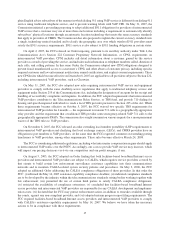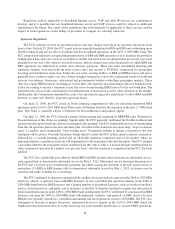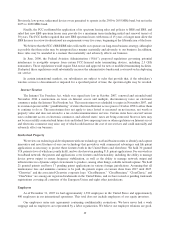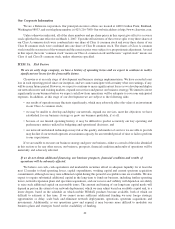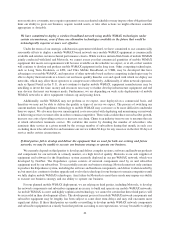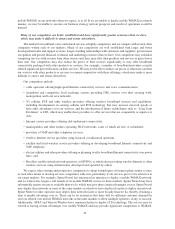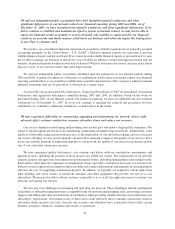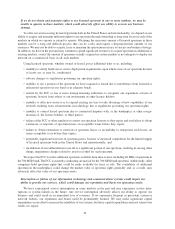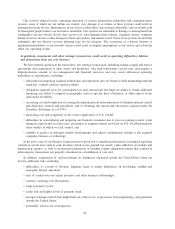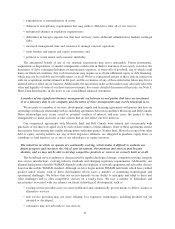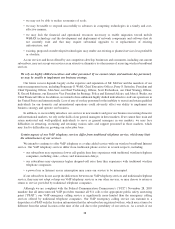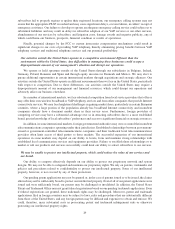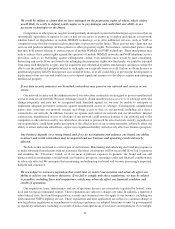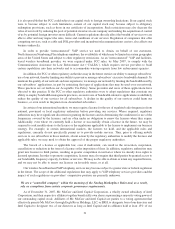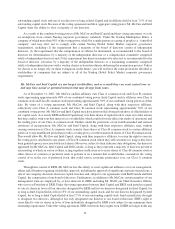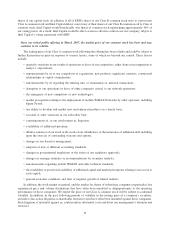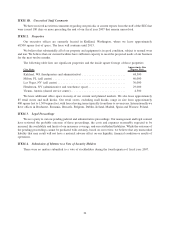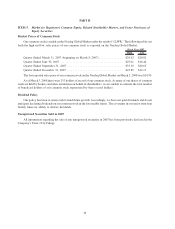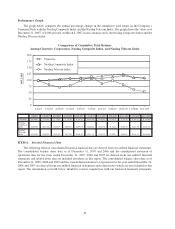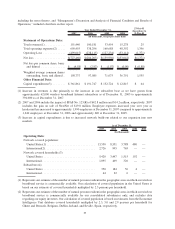Clearwire 2007 Annual Report Download - page 35
Download and view the complete annual report
Please find page 35 of the 2007 Clearwire annual report below. You can navigate through the pages in the report by either clicking on the pages listed below, or by using the keyword search tool below to find specific information within the annual report.• expropriation or nationalization of assets;
• differences in regulatory requirements that may make it difficult to offer all of our services;
• unexpected changes in regulatory requirements;
• difficulties in foreign corporate law that have and may create additional administrative burdens and legal
risks;
• increased management time and resources to manage overseas operations;
• trade barriers and import and export restrictions; and
• political or social unrest and economic instability.
The anticipated benefit of any of our strategic transactions may never materialize. Future investments,
acquisitions or dispositions, or similar arrangements could result in dilutive issuances of our equity securities, the
incurrence of debt, contingent liabilities or amortization expenses, or write-offs of goodwill, any of which could
harm our financial condition. Any such transactions may require us to obtain additional equity or debt financing,
which may not be available on favorable terms, or at all. We have experienced certain of these risks in connection
with our acquisitions and investments in the past, and the occurrence of any of these risks in the future may have a
material adverse effect on our business. Additionally, the uncertainty in the credit markets may adversely affect the
value and liquidity of some of our short-term investments. For a more detailed discussion of this issue, see Note 5,
Short-Term Investments, in the notes to our consolidated financial statements.
A number of our significant business arrangements are between us and parties that have an investment
in or a fiduciary duty to our company, and the terms of those arrangements may not be beneficial to us.
We are party to a number of services, development, supply and licensing agreements with parties that have an
ownership or fiduciary relationship with us, including agreements between us and Intel, Motorola, and Bell Canada.
These relationships may create actual or potential conflicts of interest, and may cause the parties to these
arrangements to make decisions or take actions that do not reflect our best interests.
Our commercial agreements with Motorola, Intel and Bell Canada were entered into concurrently with
purchases of our shares of capital stock by each of these entities or their affiliates. None of these agreements restrict
these parties from entering into similar arrangements with other parties. Neither Intel, Motorola or any of our other
debt or equity security holders, nor any of their respective affiliates, are obligated to purchase equity from, or
contribute or lend funds to, us or any of our subsidiaries or equity investees.
The industries in which we operate are continually evolving, which makes it difficult to evaluate our
future prospects and increases the risk of your investment. Our products and services may become
obsolete, and we may not be able to develop competitive products or services on a timely basis or at all.
The broadband services industry is characterized by rapid technological change, competitive pricing, frequent
new service introductions, evolving industry standards and changing regulatory requirements. Additionally, our
planned deployment of mobile WiMAX depends on the development of network equipment and subscriber devices
based on the mobile WiMAX standard. Although we have begun mobile WiMAX field trials which have yielded
positive initial results, each of these development efforts faces a number of continuing technological and
operational challenges. We believe that our success depends on our ability to anticipate and adapt to these and
other challenges and to offer competitive services on a timely basis. We face a number of difficulties and
uncertainties associated with our reliance on future technological development, such as:
• existing service providers may use more traditional and commercially proven means to deliver similar or
alternative services;
• new service providers may use more efficient, less expensive technologies, including products not yet
invented or developed;
• consumers may not subscribe to our services;
27


